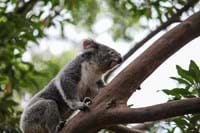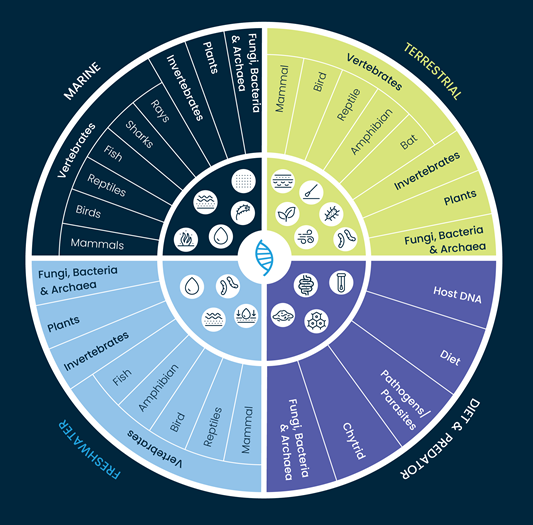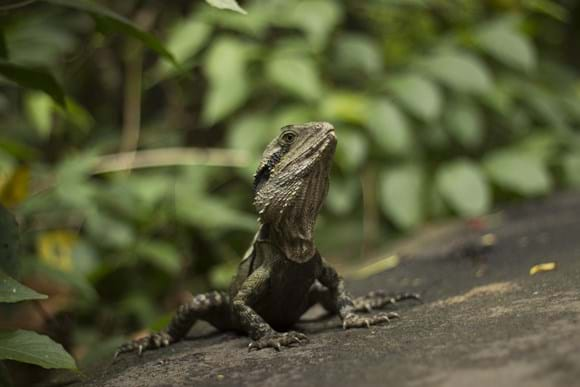Enhance natural capital accounting with precise data on biodiversity and ecosystem health. By accurately tracking species and ecosystem condition, it supports more comprehensive natural capital accounts. This data helps guide better-informed conservation strategies and sustainable resource management.
Accounting for Nature eDNA Aquatic Vertebrate Method (AfN Method F-05).
Natural capital accounting measures and values natural resources and ecosystem services to support sustainable management and better policy decisions. Accredited by Accounting for Nature and grounded in rigorous scientific standards, we’ve developed a method to assess aquatic vertebrate biodiversity. It can be applied at property, catchment, or regional scales across Australia.
The method produces condition scores and an Econd®, giving a quantifiable value for biodiversity and helping track environmental change over time.
Burnett Mary Regional Group Environmental Account
"Our collaboration with EnviroDNA has not only improved our natural capital accounting but also strengthened our capacity for evidence-based environmental decision-making. We look forward to seeing what our long-term partnership can achieve in both measuring and building resilience into the Burnett Mary region's ecosystem."
- Tom Espinoza, CEO BMRG.
Greening Australia Omeo Valley Plantings project
Omeo Valley Plantings project is an environmental restoration initiative focused on increasing the presence of native ecological vegetation communities in a previously cleared landscape. This program will calculate a condition score (Econd®) using analysis techniques including the EnviroDNA Aquatic Native Vertebrate eDNA Method (F-05).
Watch: Accounting for Nature & EnviroDNA eDNA Method Webinar
Aquatic Native Vertebrate eDNA Method
Watch time: 50 minutes
This webinar introduces the recently accredited EnviroDNA Aquatic Native Vertebrate eDNA Method (F-05). The method uses eDNA to detect aquatic vertebrate species — including birds, fish, amphibians, reptiles, and mammals. It is designed to assess the condition of aquatic vertebrates by tracking species richness over time.
"The goal is to measure the absolute condition of an ecosystem, not just changes over time. This approach allows comparison to an ideal state and across different environments, providing a consistent and meaningful benchmark for biodiversity and ecosystem health."
Dr Luke Noble
EnviroDNA Principal Scientist
Adopt Nature-related Financial Disclosures into your organisation.
The Taskforce on Nature-related Financial Disclosures (TNFD) requires companies to assess and report their nature-related dependencies and impacts. This framework helps businesses understand how they rely on, and affect, nature — information that’s critical for long-term sustainability and financial resilience.
Consumer goods and retail
Across sectors like retail, chemicals, and industry, companies are recognising the value of nature and adopting reporting and data initiatives to measure environmental impacts and dependencies.
Agriculture
Agricultural organisations are focusing on sustainable land management practices to maintain ecosystem health across extensive properties.
Energy
Investment priorities encompass renewable energy, energy efficiency, and low-emission technologies. Aligning with natural capital accounting principles to promote sustainable growth.
Aviation
The aviation industry emphasises the importance of integrating natural capital considerations into corporate strategies. This reflects a commitment to environmental stewardship.
Finance
Growing recognition of the need to address the decline of nature, ecosystems, and biodiversity, which poses risks to the global economy. A proposed solution is introducing Natural Capital Buffers (NCBs) for banks, requires them to maintain and secure natural capital proportionate to their environmentally risk-weighted assets. This approach aims to ensure investment in nature restoration and prevent systemic financial risks due to nature collapse.
Ready to explore eDNA?
Our solutions provide accurate, scalable nature intelligence to help you make sustainable business decisions. Chat with our team to find the right approach for your organisation and unlock actionable insights from your natural capital.





